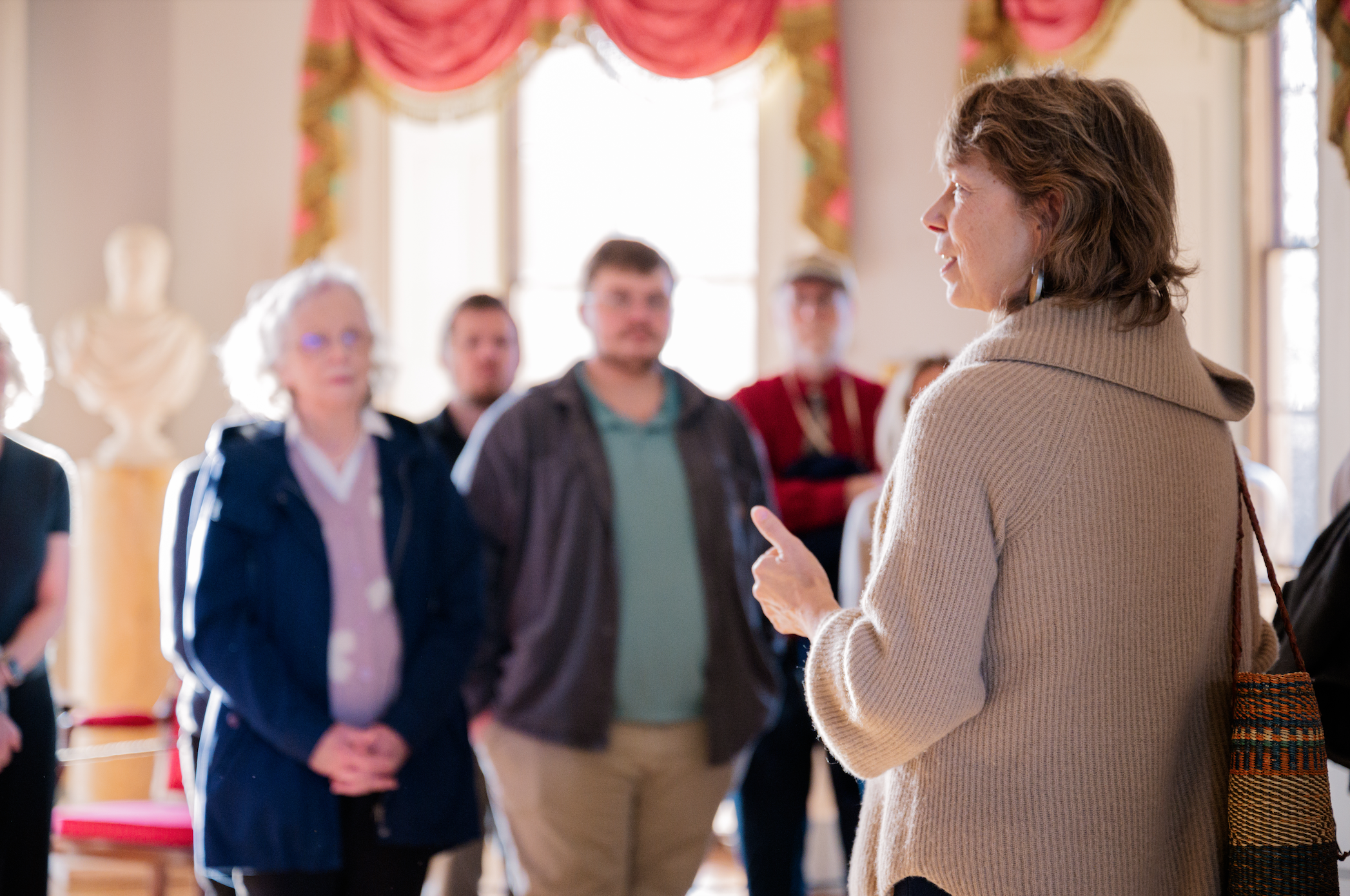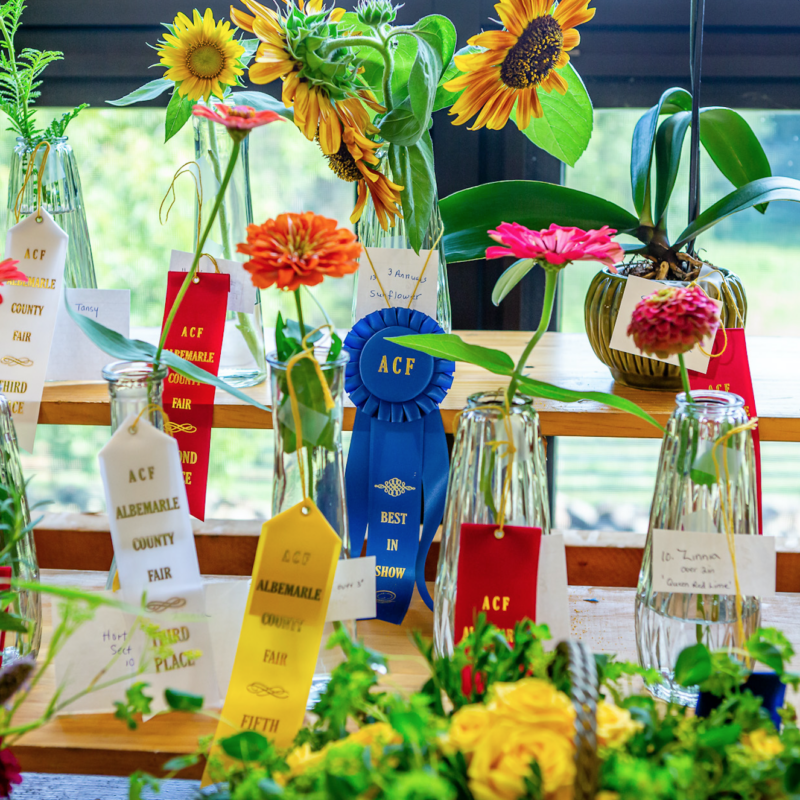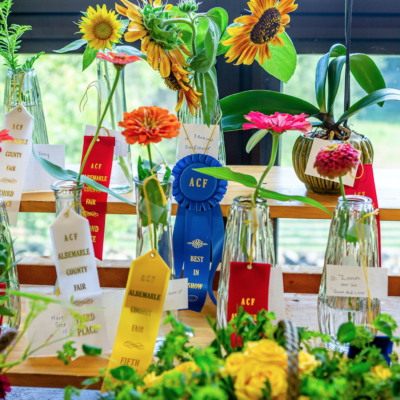To those not in the know, Fifeville sounds like one of the remote towns outside the pearly gates of Charlottesville, where you can’t get a $3 coffee drink if your life depended on it.
Nothing could be further from the truth. Fifeville is an old Charlottesville neighborhood named after the Fife family, whose farm once covered a good portion of the 250-acre area. It was originally developed for railroad workers at the beginning of the 20th century.
Adjacent to the W. Main Street Corridor, Fifeville stretches from Ridge Street to Valley Road Extended. Driving west along its main thoroughfare, Cherry Avenue, toward UVA, you pass one of the oldest shopping centers in town and then slope uphill past the new Roosevelt Brown Boulevard. At that point, Cherry becomes like a roller coaster ride. Up and down you go (for God’s sake, slow down and get a thrill some other way!) through a peaceful residential section.
 We spotted Nate Winston near the corner of Grove and Jones. One of Fifevile’s great assets is its proximity, by foot, to Downtown. We spotted Nate Winston near the corner of Grove and Jones. One of Fifevile’s great assets is its proximity, by foot, to Downtown. |
The neighborhood may be old, but in terms of the real estate market, it’s entering a new phase.
Realtor Heather Griffith compares the rise in interest in Fifeville property to what happened in Belmont several years ago. One big factor is UVA’s continuing expansion. “The new cancer center, the South Lawn Project,” Griffith says, “that’s why Fifeville is a good investment.”
We visit one house on Grove Street Extended, just on Fifeville’s western border, whose owner rented it out for many years to UVA students. The market has changed. “They saw the value of selling,” Griffith says. Like many of the neighborhood’s houses, it was built in the 1920s. To the question of whether it needs some interior renovation, Griffith says, “Very much so.” That’s no tragedy for many a buyer today, however. The square stucco house, perched on top of a tiny hill, with its solid, historic charm and immense backyard, seems worth its $244,900 price, plus any extra money
for renovation.
Sweat equity
Ray Nedzel knows all about renovating. He lives on Oak Street, right near the eastern border of Fifeville, in a house built in 1925 that he bought a year and a half ago.
 Ray Nedzel knows his house inside and out after doing major renovations. "There were times during the work when I would think, ‘I don’t know how this house is even standing,’" he says. Ray Nedzel knows his house inside and out after doing major renovations. "There were times during the work when I would think, ‘I don’t know how this house is even standing,’" he says. |
“It had to be jacked up and all the beams replaced,” he says. “There were times during the work when I would think, ‘I don’t know how this house is even standing.’” Currently, he occupies the second floor while he’s refashioning—a euphemism for grueling, painstaking renovation—the bottom floor, which includes a closed in room that used to be a side porch. By this June, he hopes to do a switcheroo: move downstairs into a pristine new space, and rent out the second floor.
The bottom floor has an atmosphere of controlled chaos: tools and plaster dust scattered everywhere but with an incremental goal clearly in sight. Nedzel is doing a heavy share of the work himself. “I’ve hired a few people here and there,” he says. He also had to enlist a bulldozer to clear the backyard of all manner of junk: car parts, oil cans, broken bicycles, etc.
Especially now that he’s well on his way to fulfilling his vision, Nedzel appreciates what’s happening to the neighborhood. “When I bought the house there were four nearby properties condemned by the city, literally padlocked shut.” None of them ended up getting torn down. “Renovations as opposed to knockdowns,” Nedzel says, clearly pleased. “The neighborhood will never be quite gentrified.”
Nedzel values this section of Fifeville for another reason besides the opportunity to purchase a fixer-upper. “I wanted to be able to walk Downtown,” he says. “It’s closer here than when I was living in Belmont.”
Oak is a gem of a street, not so much beautiful as strikingly authentic, with a small-scale, European quality tinged with obvious historic American touches. One house, for instance, has a Southern, old-style double front porch. Sidewalks are sporadic and off-street parking is a rarity. Nedzel feels lucky to have a driveway. “More sidewalks,” he says, “would be key to bringing more of a neighborhood feel.”
But he’s not complaining. In Fifeville he’s found his home—even if it isn’t quite up and running yet.
Authentic ambience
Not all the available homes in the neighborhood need so much grooming. Griffith and I visit another 1920s house farther east on Grove Street, similar in size and design, that’s already had some work done on the interior. This one’s selling for $283,000. The refinished heart pine wood flooring in most of the rooms is especially impressive. Griffith calls them the kind of floorbaords that, if removed and sold separately, “people would pay big bucks for.” There are two large bedrooms upstairs, and two bathrooms—the one upstairs has a clawfoot bathtub.
The house is a tight fit (cozy, if you like), and it’s easy to imagine even further work being done on it. And that’s what Griffith predicts. “A family would buy something like this and fix it up.”
Grove Street is a sort of spruced up version of Oak Street, but projecting the same earthy authenticity, complete with—you’ll believe it if you see it—neatly cluttered porches, and a sense of immiment, as opposed to reclusive, life: As we visit the house, a man is reading on his porch, eyeing us peacefully out of the corner of his eye.
 |
Forest Hills Park is one place where Fifevillians congregate.
Grove doesn’t feel as timeless as Oak. University buildings loom visibly in the distance, and six new houses are being built nearby on 10th and Page. But this particular location, and its air of freshness, will appeal to certain types of buyers.
That’s Fifeville for you: streamlined in some respects, but with enough subtle and glaring variations to keep your brain permanently teased. Oh, and a fine place to live.
At a glance
Distance to Downtown: .7 miles
Distance to UVA: 1 mile
Elementary School: Johnson
Number of households in 2000: 1,270
Median age in 2000: 32.2
City tax rate: $.99 per $100
Average home assessment in 2007: $145,000
Increase in average assessment since 2006: 32 percent




